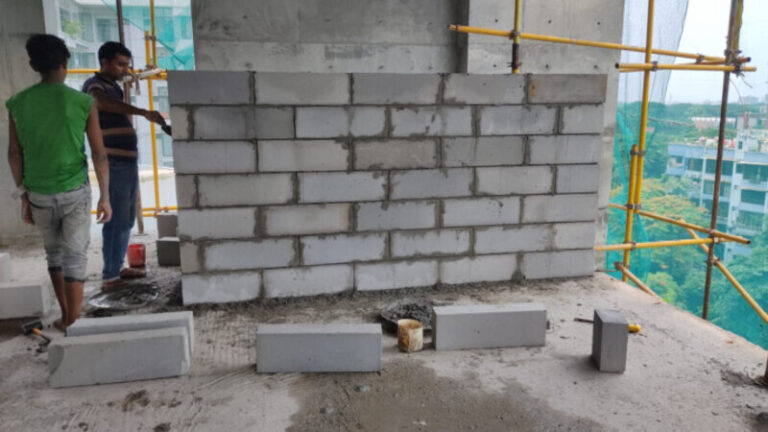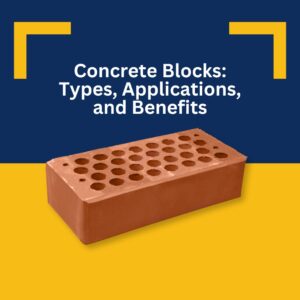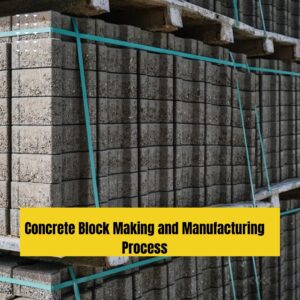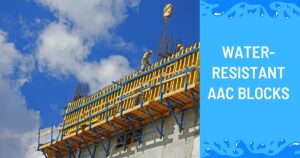Nextblock is a green construction material engineered to replace concrete blocks, wood, ceramic bricks, and red bricks
Bengal Hurricane Group needed to finish a six-storey building within only eight months. It would have been near to impossible to complete the project on time using traditional construction material and methods. Due to the time constraints, architect Md Shafiul Azam Shamim of Arquitectura (Pvt) Ltd recommended AAC blocks to the client.
“These blocks are perfect for fast construction, are cost-effective and require minimal labour,” he said.

Autoclaved aerated concrete (AAC) is a lightweight, precast, foam concrete building material suitable for producing concrete masonry unit like blocks. It has been around globally for more than 70 years and offers several benefits over other cement construction materials. One of its most important benefits is its lower impact on the environment.
In Bangladesh, Eco Friendly Green Bricks Ltd and Chao Heng Investment Ltd from China jointly launched ‘Nextblock’ (Autoclaved Aerated Concrete). The building material is both cutting-edge in technology and fit for green building constructions. Nextblock is engineered to replace traditional construction materials such as concrete blocks, wood, ceramic bricks, and red bricks in general.
Eco Friendly Green Bricks Ltd is a sister concern of Tilottoma Bangla Group. Through introducing Nextblock, the company hopes to help Bangladesh to achieve its Sustainable Development Goal (SDG).
AAC was perfected in the mid-1920s by Swedish architects and inventors. In the 1990s, the technology arrived in China and became very popular.
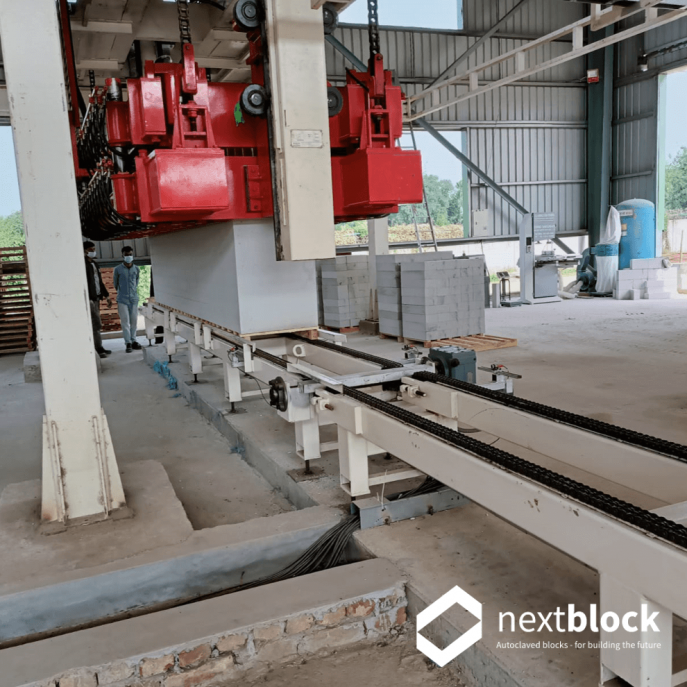
The future of construction
Nextblock is a BUET-tested and HBRI (Housing and Building Research Institute) certified product. It has been involved in 100 projects in only nine months. Some of the prominent projects by construction giants Bengal Hurricane, Amari, and Edison Properties Ltd have used Nextblock.
Eco-Friendly Green Bricks Ltd imported state-of-the-art machinery and technology from Germany to produce Nextblock.
” During one of my trips, I found AAC products in Germany quite interesting,” said Shahriar Sajjad, Managing Director of Tilottoma Bangla Group. “Before starting the Nextblock venture I visited more countries and their AAC factories. When we studied its benefits, we felt that this product is necessary to solve our country’s climate issues. This led me to establish the factory in Bangladesh immediately.”
With Chinese technology and expertise, the company established its factory at Ghatail, in the Tangail district. In this factory, 500m3 AAC blocks are manufactured every day, which is equivalent to 2,50,000 units of regular bricks.
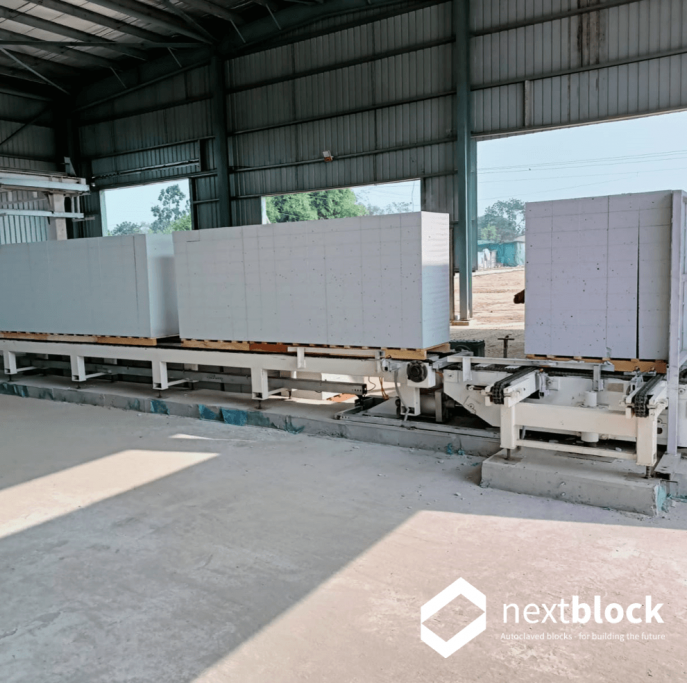
The exact method used to create a slurry, by combining ingredients, is used in making AAC as well. When the aluminium paste is added as an expansion agent, air bubbles are dispersed; creating a low-density, lightweight material.
Forms are used to shape the wet concrete, and once it has mostly dried, the slabs and blocks are cut out. The units are then transferred to an autoclave machine for an approximate 12-hour complete cure under heat and pressure.
“This is a futuristic product for our next generation; that is why we named the brand Nextblock. I would encourage other entrepreneurs as well to come up with similar products to meet our country’s brick demand. Architects, designers, and developers need to learn more about AAC and use it as a standard building material,” Shahriar added.
“We are the first one to bring AAC to Bangladesh, and have already delivered it to various companies. It has received a huge response from our clients. Most are re-ordering it two to three times and spreading awareness about the benefits of the product,” said Mohammad Emran, CEO of Eco Friendly Green Bricks Ltd.
Access to greener future
AAC produces at least 30% less solid waste than traditional concrete. During its manufacturing process, cultivable farms and lands are not destroyed because the key ingredient is sand.
The sand is collected from the river bed, which increases the depth of rivers and removes the unwanted deposits for the safe passage of boats and ships. It also helps preserve aquatic environments.
Furthermore, zero topsoil is used in this project and no harmful soil emission has ever been observed.
Nextblock AAC also produces 90% less pollution when compared to traditional red brick productions. It is not burnt in coal or other fuels. Moreover, there are no toxic gases or other toxic substances in AAC. It neither attracts rodents or other pests, nor can it be damaged by them.
AAC block walls don’t need 24 hours of water curing like regular bricks. Only the mortar joints need water for curing during the installation, therefore, water consumption is lesser in comparison to regular bricks.
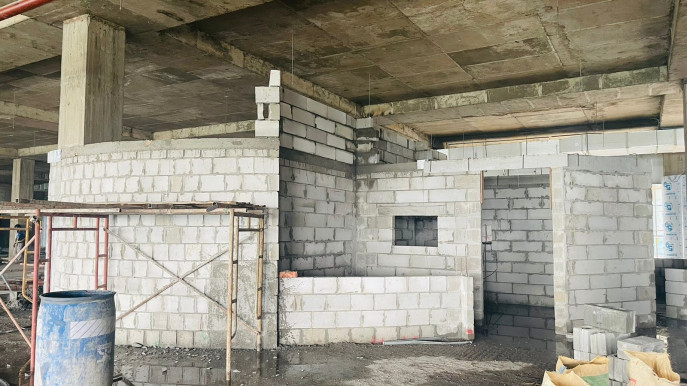
Improved thermal efficiency of AAC reduces the material from heating, it is at least 2–3 degrees celsius cooler during summer, and as a result homes and offices will not need to rely on air conditioners as much.
The lightweight quality of the material saves cost and energy in transportation, labour expenses, and increases chances of survival during seismic activity. Also due to the less weight, the blocks can be handled easily.
The life of this material is also long-lasting because it is not affected by harsh climates or extreme weather changes. It will not degrade under normal climate changes.
AAC is fire resistant for about 4.5 hours at a 1,250° celsius, the porous structure gives the blocks superior fire resistance.
Panels and blocks made of AAC are produced to the exact sizes needed before leaving the factory. There is less need for on-site trimming. Since the blocks and panels fit so well together, there is less use of finishing materials.
This material is very airy and allows diffusion of water. This reduces the humidity inside the building. AAC will absorb moisture and release humidity in the outer environment. This helps prevent condensation and other problems that are related to mildew.
The AAC blocks can reduce 20%-25% of the overall cost of construction while planning the project because a block is equal to seven red bricks, however, it weighs only 7.5-9.5 kg, about ⅓ of normal concrete. Moreover, 25% less foundation is required when a building is constructed using AAC products.

